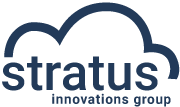The Differences Between DRaaS and Disaster Recovery (And How to Know What Your Business Needs)

In a disaster, you might find yourself unable to access your business’ servers and vital data. To minimize this risk, you should implement a disaster recovery (DR) solution.
However, it’s easy to feel overwhelmed by your DR options. Keep reading to learn how disaster recovery as a service (DRaaS) compares to other traditional and cloud-based DR solutions.
Disaster Recovery vs. DRaaS: What Is the Difference?
Disaster recovery solutions are a rapidly developing area of IT. While many businesses used to rely on tape backups, today there are numerous cloud-based systems that are scalable and relatively easy to implement.
RELATED ARTICLE: Does Your Business Have an IT Disaster Recovery Plan?
All disaster recovery systems aim to protect data and information from catastrophic events. However, these systems vary in their implementation and scope. Some examples of disaster recovery options include:
- Backup: The solution takes a snapshot of selected data and stores it off-site, either on a physical server or a virtual machine. Backup is only effective if you need to recover specific files or folders, as this doesn’t account for complete system failure.
- Disaster recovery: You replicate your servers, either at a secondary location or on another physical server. After a disaster, your IT team will have to implement its disaster recovery plan, and failover times may vary.
- DRaaS: The solution replicates your entire server on a virtual machine. During an emergency, you can complete a failover in a matter of minutes. Stratus Innovations Group’s DRaaS offering also monitors your servers’ operations and can identify an outage or failure in real-time.
For more detailed information about our DRaaS solution and other disaster recovery solutions, contact Stratus Innovations Group. We’d love to talk with you about this developing area of technology.
Assess Your Need for IT Stability and Business Continuity
Before you make a disaster recovery plan, you should candidly assess your business’ IT needs. While many businesses need almost immediate access to their server data and applications, some don’t rely as heavily on IT infrastructure.
When evaluating your DR options, you should consider whether lost data or significant failover delays will negatively impact your operations. In the IT industry, we usually gauge a company’s business continuity needs based on two key elements:
- Recovery point objective (RPO): The maximum amount of time you can lose data without negative consequences
- Recovery time objective (RTO): How long you can wait before you have access to your replicated server or data
Disaster recovery solutions vary in how frequently they capture data. If you make frequent changes to your data, you’ll want a solution that offers an RPO that’s as close to real time as possible.
RELATED CASE STUDY: Disaster Recovery as a Service for VMware: Case Study With Bettcher Industries
Another consideration is your need for data sovereignty. Some businesses shouldn’t (or can’t) store their data on a shared cloud due to the sensitive nature of their information. In these situations, you might prefer a traditional off-site backup system where you have full control over your data. Alternatively, you might consider a private or hybrid cloud where you store some or all your data either on a privately-controlled cloud or on-premises.
Understanding the Costs Associated with DRaaS and Traditional Disaster Recovery Solutions
If you decide to use a secondary server location, your business will incur the significant costs associated with purchasing, maintaining, and powering your IT infrastructure. During a disaster, you’ll also need to mobilize your IT team and implement your DR plan. If there are issues with your hardware or connectivity, you might face significant delays or problems with your failover.
RELATED ARTICLE: The Most Common IT Disasters (and How to Avoid Them)
In comparison, DRaaS offers compelling benefits. When you choose a DRaaS solution, you’ll work with an IT partner who will create a bit-by-bit copy of your physical or virtual server disk(s) a Cloud storage account, and then will create new servers from these disk images as needed when a disaster happens. This means that your business won’t face additional costs associated with server maintenance and acquisition. The efficiency of DRaaS gives you the freedom to allocate your IT resources to other projects.
More importantly, with DRaaS, your IT partner should oversee every aspect of the failover process and guide you through the implementation of your DR plan so your business can recover and rapidly move past a disaster.
Stratus Innovations Group: Customized DRaaS Solutions for Business and Industry
Stratus Innovations Group builds customized cloud DRaaS and cloud solutions for businesses of all types and sizes. Unlike many IT services, our team of experienced engineers and developers can tailor our cloud solutions to meet your exact needs.
To learn more about our DRaaS offerings, contact us today by filling out our easy online contact form or calling us at 844-561-6721.
